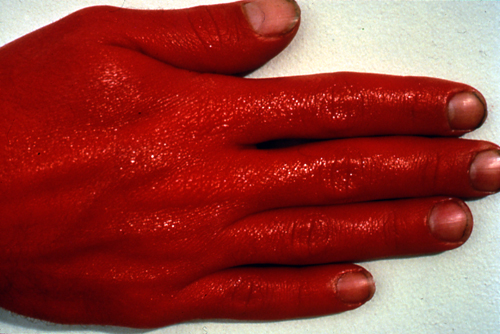NYC Visual Aids Curatorial 2010
FEATURED GALLERY FOR AUGUST 2010
Each month, Visual AIDS invites guest curators, drawn from both the arts and AIDS communities, to curate an online web gallery.
The web gallery increases exposure for artists living with HIV to an international audience, keeps alive the work of those we have lost to AIDS, and continues the tradition of innovative collaborative work.
In July 2010, it was an honour to be a guest curator. Thank you VISUAL AIDS.
Find out more: https://www.visualaids.org
Mission
Visual AIDS utilizes art to fight AIDS by provoking dialogue, supporting HIV+ artists, and preserving a legacy, because AIDS is not over.
Statement of Values
Visual AIDS is the only contemporary arts organization fully committed to HIV prevention and AIDS awareness through producing and presenting visual art projects, while assisting artists living with HIV/AIDS. We are committed to preserving and honoring the work of artists with HIV/AIDS and the artistic contributions of the AIDS movement. We embrace diversity and difference in our staff, leadership, artists and audiences.
In the fight against AIDS, we believe:
- Effective AIDS advocacy seeks to address the underlying and related issues that contribute to and exacerbate the pandemic, such as poverty, homophobia and racism.
- Our work affirms the visibility, dignity and rights of people living with HIV and AIDS.
- HIV/AIDS prevention is about harm reduction that is guided by science, not ideology.
- We draw from the deep history of art activism, as with our Red Ribbon Project and Day With(out) Art.
- Visual AIDS promotes art that is public, inclusive and accessible.
- Art that takes risks promotes and encourages reflection, dialogue and action.
Art is our weapon of choice.
The Infidels’ Hallelujah / https://www.visualaids.org/gallery/detail/98
In this series of chosen works, Bérubé touches on the delicate relationship between artist and dealer, a relationship that is vastly different, depending on whose point of view is considered. This is a business relationship that endeavors to achieve success by way of savvy marketing, media coverage, and buzz for a product that both parties involved hope inspires a buying public to make this public display of ideas and talent a part of their private lives. A constant force between these two parties is the sometimes conflicting interests shared by either of the two. Sales, artistic acclaim, street cred, one-upmanship and any of a number of other factors all combine to create what all involved hope will lead to a sense of fulfillment.
Having known Guy since I moved to Ottawa, I can say with certainty that the works selected for this exhibition accurately represent Guys taste for l’art brut and all it represents. In a way, working with Guy in choosing these works was a bit of a metaphor for the relationship between dealer and artist. In turn, one of us would select a group of works in a fit of excitement while the other examined them with a critical eye validating the choices or recommending their exclusion for one reason or another. Without delving too deeply philosophically, we both worked with the goal in mind to bring together a collection of work that represents a central idea — the Infidels Hallelujah.
— Written by Francesco Corsaro, 2010
Image Credit: “Self Portrait as Case Study”, 1994, Frank Green
See full exhibit here: http://www.visualaids.org/gallery/detail/98
CURATOR : Guy Bérubé / Assisted by Francesco Corsaro
Guy Bérubé’s vision for La Petite Mort is truly — and perhaps surprisingly, given the gallery’s name — a vision of social ethics. He sees the artist’s struggle with self-awareness through visual art reflected back to the viewer not as passive recipient but as active participant in the creative endeavour. A signature feature of LPM is the feeling of discomfort many of the artworks evoke, which, as is the goal of subversive art, reflects the viewer’s personal projections back upon herself. This discomfort is a necessary part of Bérubé’s aesthetic and ethical sensibility. It recognizes the role of art in alienation and in critical transformation, for cultural progress is usually provoked by the ideas invoked at the boundaries of our communities.
LPM artists represent subjects at the margins of contemporary Canadian urban society — the sublime as well as the homeless and the schizophrenic — no different than most mainstream art since the post-Renaissance period. Not here to shock nor to entertain, however, Bérubé as LPM gallery owner and director is here to provide an inclusive forum for today’s Canadian & international artists, including those typically sidelined by mainstream society and those simply unable to function normally within it. He gives the Canadian visual arts community an edge that not only gives art a vehicle for its traditional cultural role, but is acknowledged for giving Canadian Art that edge that contributes to its recognition on the world stage.
Born and raised in Toronto, Ontario, Francesco Corsaro earned a B.A. in Fine Art History and Italian Studies at the University of Toronto. A career arts administrator, Francesco has worked for various arts organizations including The Power Plant Contemporary Art Gallery, Toronto Artscape, and the National Arts Centre Foundation, among others. Having moved to Ottawa, Ontario, Francesco divides his time between the Bytown Museum as the Director of Development and Festival X, Ottawa Photography Festival where he is co-founder and Vice President. Francesco was also the Director of the now-defunct IPO Gallery, a gallery for emerging artists.
